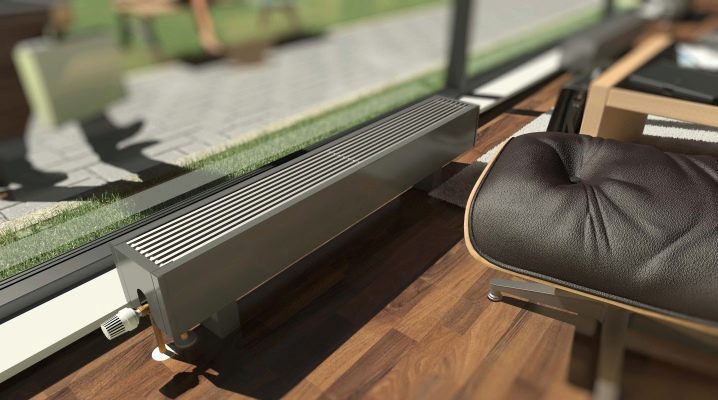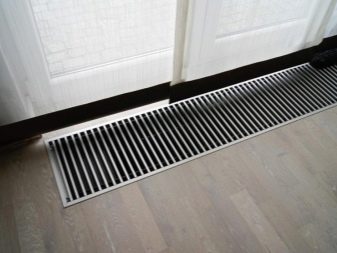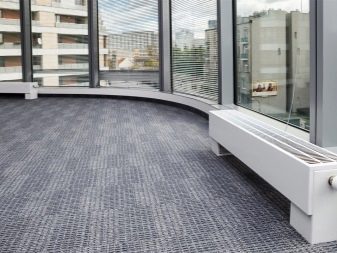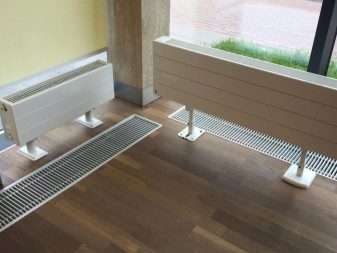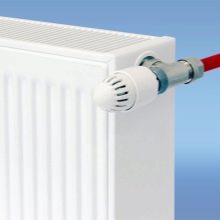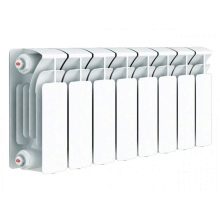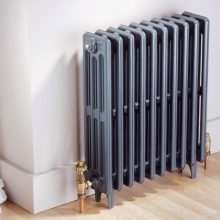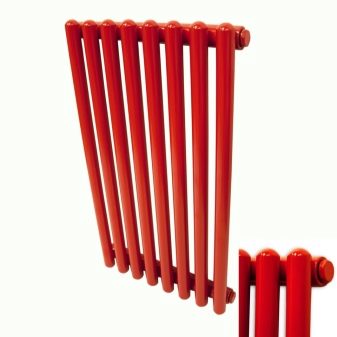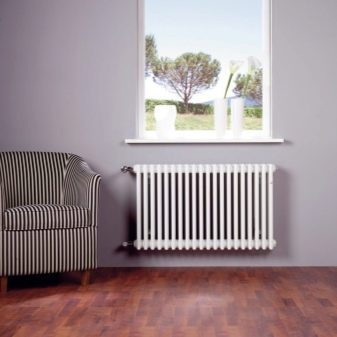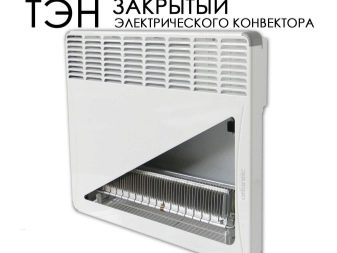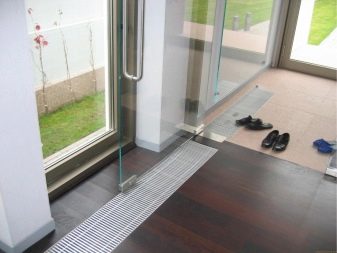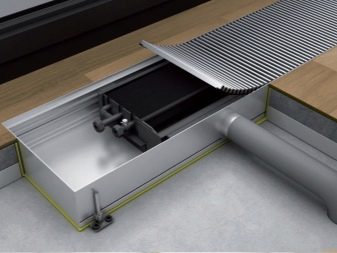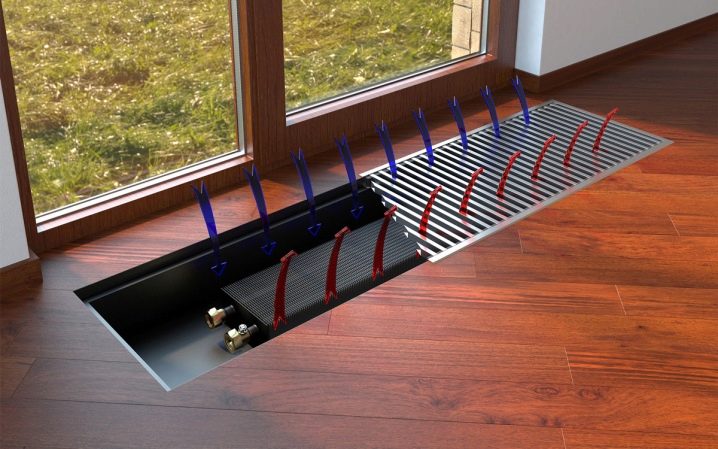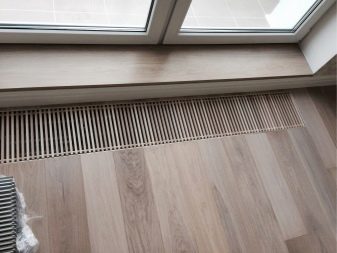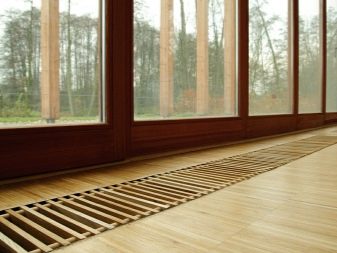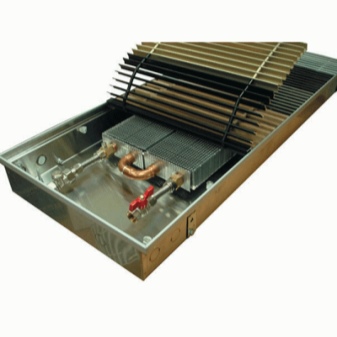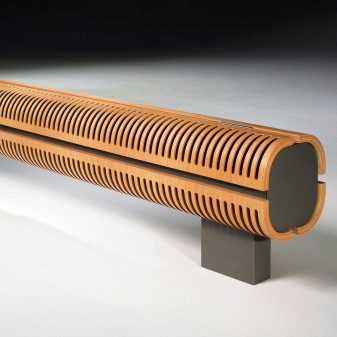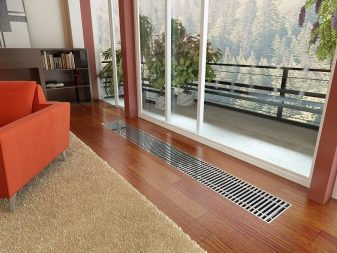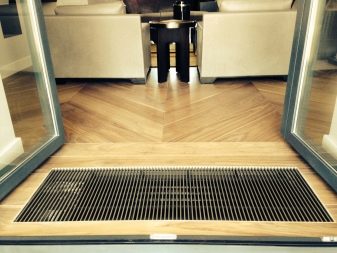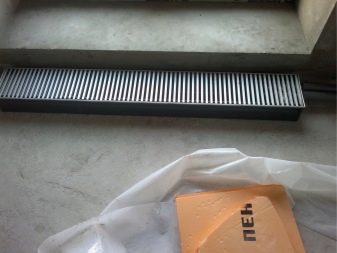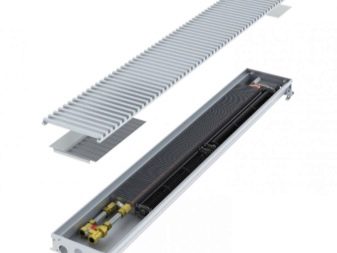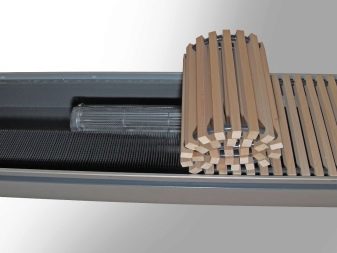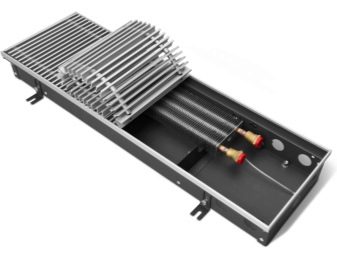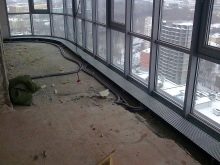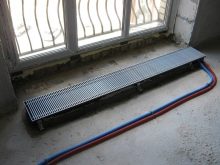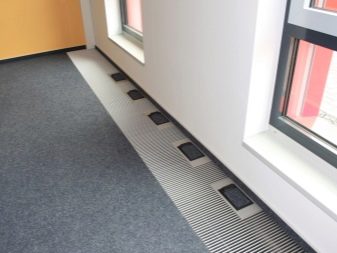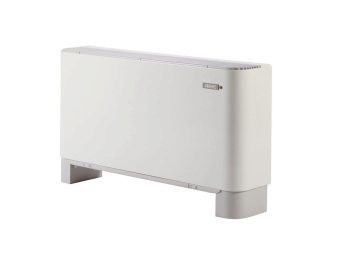Floor heating radiators: types of devices, advantages and mounting options
In our time, floor radiators have not yet managed to gain great popularity among users. Many have not even heard of such an appliance, although such heaters are in many ways more convenient and functional than traditional ones. Several models of such products have already appeared on the market, so we decided to tell you more about the features of the floor-mounted radiator, its advantages and disadvantages.
Features and application
The fundamental difference of floor heaters is in the method of fastening - they are not mounted to the walls, but to the floor or any other horizontal surface, there are simply no other differences.
The need to use such structures arises in the following cases.
- When it is not possible to install standard batteries - such a situation is not uncommon. For example, if even cast-iron appliances can be attached to a brick wall, the lightest aluminum is already too heavy for plasterboard partitions, especially since the weight of the heat carrier should be added to the mass of the heater. It is obvious that such a radiator is optimal when the device of the wall does not allow fixing too heavy a heater on it.
- In the windows of shopping complexes when creating a panoramic glazing. If you do not install a heat source near such glasses, they will fog up and become covered with a thin layer of ice. To prevent this, heaters are attached under the windowsills. As a result, cold air, falling down, goes to the batteries, and not into the interior of the room. However, if the glass occupies almost the entire surface of the wall, then the installation of standard batteries is impossible - it is then that the floor radiator can be the best solution.
Types of designs
Depending on the material used for the production of radiators, several types of devices can be distinguished.
- Aluminum and cast iron. These are probably the “oldest” versions of radiators, which were first presented to consumers at the beginning of the last century. However, it is rather difficult to find floor products made of these metals, it is much more common to find ordinary batteries that are simply attached to the floor with the help of brackets. We can say that these are ordinary wall models that were simply attached to the floor.
- Bimetallic radiators. To a similar type of heating devices are those that are made of two metals, most often found aluminum-copper and aluminum-steel. The features of such radiators include the following point: the water inside them moves along a special core made of steel and characterized by high corrosion resistance.
- Steel. This option of radiators is quite widespread, from this alloy perform convectors, registers and tubular models. Convectors are characterized by the same design as analogs of aluminum and copper, however, with the same dimensions, the degree of heat transfer from steel models is slightly lower.
Tubular modifications can have a wide variety of configurations,due to this, they are often used not only for effective heating, but also as an element of decor in the room, a stylish accent of a modern interior. Registers look like the most elementary improvised installations, they are made fairly quickly: thick pipes simply connect to each other using special jumpers, which form a closed loop at the output. Such products can be used as an element of the heating system, and autonomously.
Separately, it is necessary to dwell on the varieties of heaters inside floor radiators.
Depending on the principle of action, they are divided into electric and water.
- The first varieties work at the expense of a special closed heating element, on which metal plates are held, they are copper or steel. The purpose of such discs is to maximize the surface area in contact with the air flow. Such radiators are distinguished by a high degree of safety, since they are equipped with fuses for effective and reliable protection against any possible malfunctions in the operation of the power grid.
- The principle of operation of water models is slightly different.The main heating element here is a metal pipe with several plates, which with the help of special pipes are attached to a centralized heating network.
Depending on the type of model, a fan may turn on in the floor radiator, this significantly increases the heat transfer of the device. This radiator is powered by an electrical current network and supplemented with special vibration-proof supports, which repeatedly reduce the level of noise emitted.
For owners of non-standard rooms for individual projects, radiators of various forms and the required radius of curvature can be manufactured. If the device is planned to be used in houses with a high level of humidity, then it is necessary to give preference to models made of stainless materials with an integrated drain for drainage. In some models there are special electronic regulators that allow you to set the optimal temperature background. As a rule, complete with similar products is a remote control.
Advantages and disadvantages
Floor radiators have a number of consumer advantages, among them you can specify:
- ergonomics and the possibility of installation in any place of residential and non-residential premises;
- substantial savings in free space;
- above the heater, you can install a table, cot or other piece of furniture;
- complete stealth;
- possibility of use in the interior of any style;
- a radiator of this type creates a heat curtain in places where attachment to the walls is not available (for example, with glazed surfaces);
- possibility of mounting on brittle surfaces, sensitive to the dimensions of attached mechanisms.
At the same time, one should not forget that even with the installation of floor-mounted appliances, visible pipes remain, and this is completely undesirable, especially when it comes to sales and exhibition halls, so the flooring of the insulated floor there is very different. To hold the pipes under the tile is not an easy task, besides, one should not forget that access to the heating system should be free for its maintenance and repair. Sooner or later, a situation will certainly arise when one of the heating elements fails and then you have to disassemble the entire structure and replace the lining completely.
In addition, floor heaters can not effectively heat rooms with large dimensions - the heat is unevenly distributed, and in some areas and does not flow. And, of course, one of the drawbacks of such systems is the complexity of installation. Work on the arrangement of such heaters is carried out with the obligatory lifting of the floor, which significantly increases the cost of building materials, as well as increases the cost of time and effort.
All this leads to an increase in the cost of production - the prices for floor models of radiators are much higher than those on the wall, and their effectiveness for large rooms and rooms with high ceilings, on the contrary, is lower. Well, the last minus, which is especially unpleasant for housewives - the separation of dust on the surface of the dwelling, which negates all cleaning in the room.
Criterias of choice
- When choosing a floor radiator, the most important criterion is its size and power; in addition, you should decide on the type of convection: it can be forced or natural. This completes all the nuances of choosing the optimal device when it comes to devices with an electric heating element.
It is more difficult to work with water systems; a few additional factors can influence a purchase decision, besides the size and material of which the housing is made, as well as the fins and pipes.
- The first thing to pay special attention to is the overall pressure level in the heating system. For private buildings and cottages any model will fit perfectly, since the pressure here rarely exceeds 3 atmospheres. But apartment owners in high-rise buildings should add pressure testing and operating pressure of the heating system. Experts recommend installing devices designed for 15 bar.
- The parameters of the coolant. Here, the approach is the same: for individual heating systems, you can use a variety of designs, since only the owners of the house set the required temperature regime, but the owners of apartments in high-rise buildings are forced to adapt to what flows in their pipes. And this applies not only to the degree of heating, but also the presence of various suspensions, oxygen content and method of connection. Therefore, it would be right to begin to get acquainted with the recommendations for specific types.heat carrier, and then compare them with the parameters of the heater.
- Type of system and diameter of connection. Most often, the varieties of floor-mounted radiators are equally effective in both single-pipe systems and double systems, however, there is no rule without exception, so it is imperative to focus on this point. The diameter should also be taken into account, but this factor cannot be considered critical, since in our time the market is filled with all kinds of adapters, so any dimensions can be “fitted” to each other.
- It is very important to think in advance about what material the radiator should be made for in specific operating conditions. If the room is dry, then you should not buy a product with a stainless steel body, as there are sometimes serious doubts about this material. Of course, world-famous brands produce their heaters only from the best steel, but cheaper counterparts often use the so-called technical stainless steel, which significantly loses in its performance characteristics.
Installation Methods
Installation of floor radiators can be done independently,without recourse to specialists, however, minimal experience with such devices is still necessary.
As a rule, radiator fasteners are carried out in one of two ways: converter to glass or to a heated room.
- If the radiator is turned to the window opening, the cold air will be cut off completely, such a system guarantees the absence of even minimal condensate, and in addition, with a similar mechanism of operation, hot and cold air masses are mixed with each other, and as a result all the parts of the room are heated evenly. However, the room at the same time will heat up rather slowly, since the vast majority of thermal energy will be spent on heating the glass.
- But if you turn the convector 180 degrees and direct the heat waves towards the room, you can achieve very fast heating. However, indoors there will be zones with varying degrees of heating, as well as the appearance of condensation on the windows is very likely. And in fact, and in another case, the level of comfort of residents significantly reduced.
Modifications that are built right into the floor are installed in specially prepared gutters.In the case when the floor is concrete, the space between the walls of the gutter and the metal body is filled with mortar, and if the work is carried out for a wooden floor, then around the radiator a solid frame is made of bars.
Expert advice
There are quite a few popular options for heating with floor products.
- Floor radiators - the main device is located below the floor line, and on the surface lies only the grille, through which cold air masses penetrate the convectors, and the warm ones rise upwards. Such installation is quite laborious, and the eyeliner itself is often hidden, which is highly undesirable in the event of an emergency.
- Fan Coil Application These are systems in which heat exchangers are blown through with built-in fans that optimally redistribute warm air flows. This design causes a uniform distribution of heat over the entire area of the room, and in addition, completely frees the floor from additional communications, since all of them are located at the top and do not “steal” the useful space of the room.
Floor radiators are still considered to be little-known devices, although there are quite a few situations where they are truly indispensable. The devices are connected in the same way as the simplest radiators, they are practical, ergonomic and energy efficient.
On the merits of floor heating radiators, see the following video.
